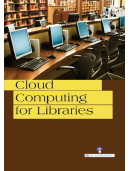Library Science

In a time when the term “cloud computing” seems tagged to almost any kind of technology product to make it sound new and trendy, Cloud Computing for Libraries distinguishes the substance from the hype to make you well-equipped to understand and evaluate its merits, risks, and value to your organization. Cloud computing is making it possible to separate the process of building an infrastructure for service provisioning from the library of providing end user services. Cloud computing provides people the way to share distributed resources and services that belong to di erent organizations or sites. Cloud computing share distributed resources via the network in the open environment. It is a virtual pool of computing resources through internet. Every day we make use of computing and information resources through a web browser powered by some distant and di use infrastructure. This model has become routine for personal use—e-mail, word processing, social networking, photo sharing. In more recent months and years cloud computing has entered the library technology sphere. Cloud computing brings the opportunity for libraries to shift away from the need to own and operate their own servers to power their core automation applications and to instead shift to gaining similar functionality through web-based services. In order to develop technology strategies in this context, it’s essential for libraries to have a solid understanding of this new technology landscape, to move beyond a vague awareness of cloud computing to a more nuanced, well-informed understanding of such concepts as software-as-a-service, infra-structure-as-a-service, and platform-as-a-service and the relative advantages, caveats, and risks.